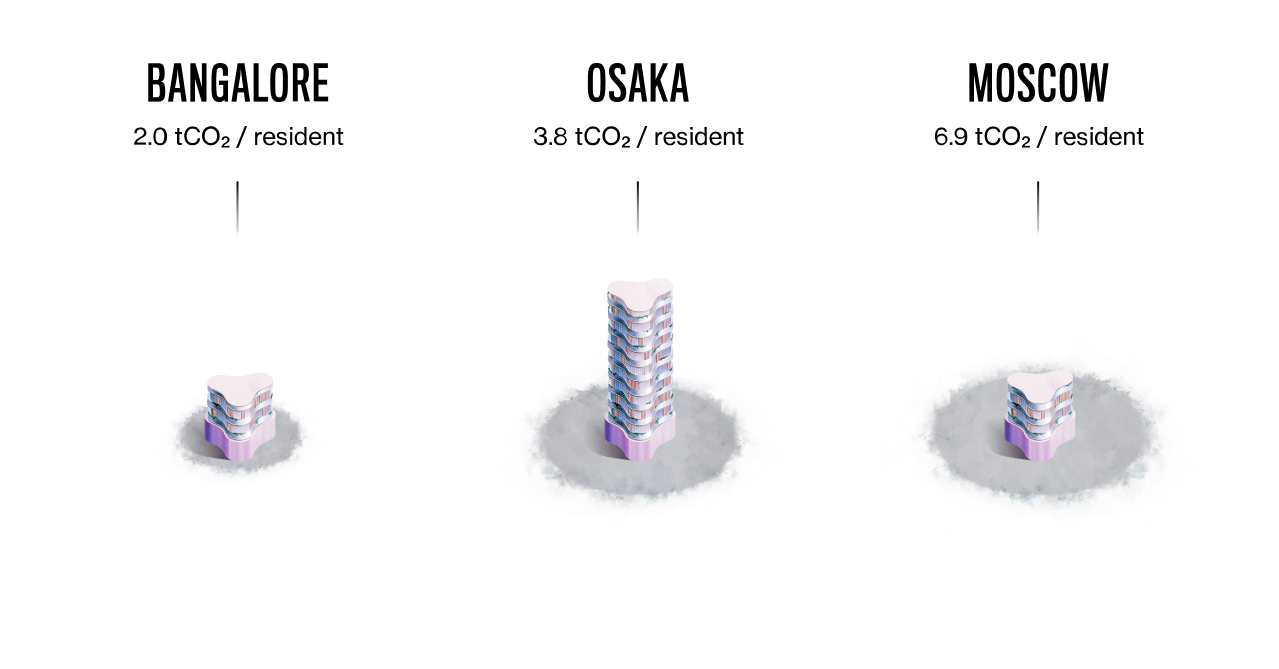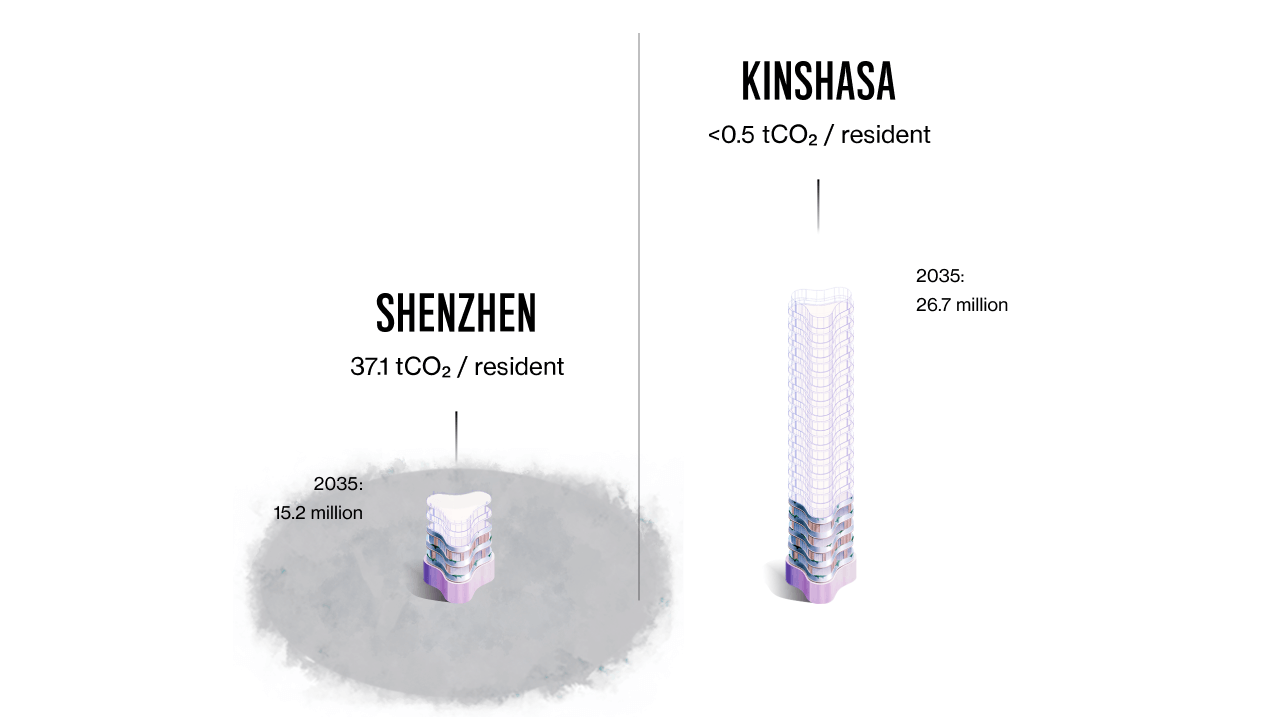June 26th, 2023
Courtesy of MIT Technology Review, a report on how reducing emissions in a few of the world’s most populous cities could have an outsized impact on climate change:
In 2050, 2.5 billion more people will live in cities than do today. As the world grows more urbanized, many cities are becoming more populous while also trying to reduce carbon emissions and blunt the impacts of climate change.
In the coming decades, cities will be engines of economic growth. But they must also play a key role in confronting climate change; the world’s 100 most populous cities are responsible for roughly one-fifth of global carbon emissions.
Some of the world’s biggest cities—called megacities—are rising to this challenge. However, these urban areas vary greatly in how efficient they are and how much they will grow. Seeing how they stack up can help us identify where our greatest opportunities are to reduce emissions.
With more people moving in and limited space to grow, the world’s cities are becoming megacities. In 2020, our world was home to 34 megacities. Most were in the northern hemisphere: in Asia, Europe, and North America.
Megacities have at least 10 million residents, represented on this map as the ground floor. For every additional million people who live there, we’ve added another floor.
Some megacities are growing rapidly and are expected to add many more residents. Here, we’ve added an additional floor for every 1 million people projected to live there by 2035. Growth will be fastest in Asia and the Global South.
However, when looking at cities’ annual carbon emissions, represented here as grey circles, fast-growing megacities in the Global South are contributing far less emissions per capita than other cities of the same size. Cities with affluent residents who lead high-consumption lifestyles are driving global atmospheric pollution.
These wealthy megacities also have more funding for adaptation measures and will be better prepared for climate change.
This is true for the three cities with largest carbon footprints per capita: Shenzhen, China, and the two most populous metropolitan areas in the United States: Los Angeles and New York.
The per capita carbon footprints of each of those three wealthy megacities are 4 to 8 times those of Bangalore, Osaka, and Moscow, which have similar populations.
These metropolises, like many other cities in developing countries, will face more climate adversity despite having smaller carbon footprints.
The population of Kinshasa, for example, is similar to that of Shenzhen today. However, the difference in their carbon emissions per capita shows the disproportionately high climate impact of Shenzhen residents.
Kinshasa is also expected to grow far more by 2035 than Shenzhen. Despite its low carbon footprint, Kinshasa’s lack of infrastructure and insufficient funding for adaptation measures leaves its rapidly-growing population at greater risk.
With less opportunity to build resiliency, residents there will face many climate change hazards including food insecurity, drought, natural disasters, and extreme temperatures.
Meanwhile, Shenzhen is taking steps to reduce its footprint. The city has added thousands of low-emissions buses and taxis to its transportation fleet, promoted green building standards, and added a cap on industries’ carbon intensity. Shenzhen now expects to reach peak carbon emissions in 2022, eight years ahead of China.
Reducing emissions in just a few more of the world’s wealthiest megacities could go a long way toward mitigating the impacts of climate change worldwide—on both the residents of these megacities and those who live in the most vulnerable environments.
By 2035, the world will have 14 more megacities, according to the United Nations. Most of the new ones will develop in Africa and Asia. The concentration of wealth and technology within metropolitan areas means cities everywhere could lead the way in addressing climate change.
Methodology
The population data for 2020 and 2035 was sourced from the United Nations, Department of Economic and Social Affairs, Population Division (2019). World Urbanization Prospects: The 2018 Revision.
The carbon footprint per capita data was sourced from Moran, D., Kanemoto K; Jiborn, M., Wood, R., Többen, J., and Seto, K.C. (2018) Carbon footprints of 13,000 cities. Environmental Research Letters DOI: 10.1088/1748-9326/aac72a.
We found the global carbon footprint for each city by multiplying carbon footprint per capita data from Moran et al. by the population data provided by the United Nations.
When interpreting the results, please keep in mind the limitations of these studies and methods; the numbers are not perfectly accurate but allow us to identify and analyze trends.
'Black Swans' are highly improbable events that come as a surprise, have major disruptive effects, and that are often rationalized after the fact as if they had been predictable to begin with. In our rapidly warming world, such events are occurring ever more frequently and include wildfires, floods, extreme heat, and drought.
'Green Shoots' is a term used to describe signs of economic recovery or positive data during a downturn. It references a period of growth and recovery, when plants start to show signs of health and life, and, therefore, has been employed as a metaphor for a recovering economy.
It is my hope that Black Swans / Green Shoots will help readers understand both climate-activated risk and opportunity so that you may invest in, advise, or lead organizations in the context of increasing pressures of global urbanization, resource scarcity, and perils relating to climate change. I believe that the tools of business and finance can help individuals, businesses, and global society make informed choices about who and what to protect, and I hope that this blog provides some insight into the policy and private sector tools used to assess investments in resilient reinforcement, response, or recovery.



